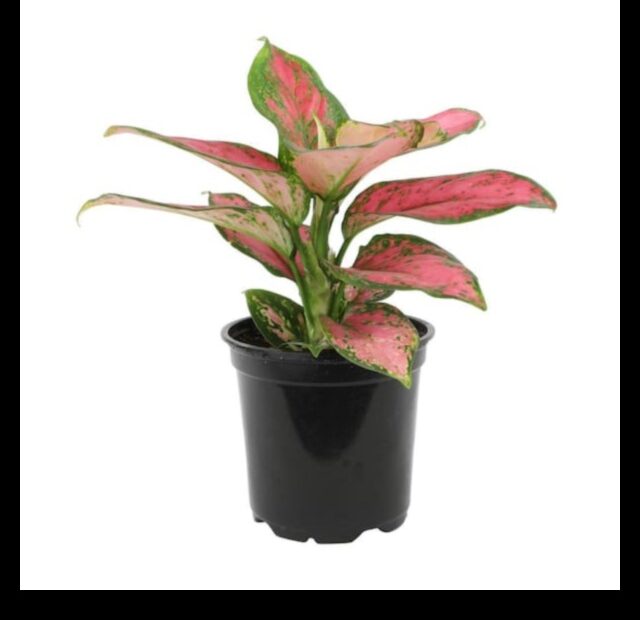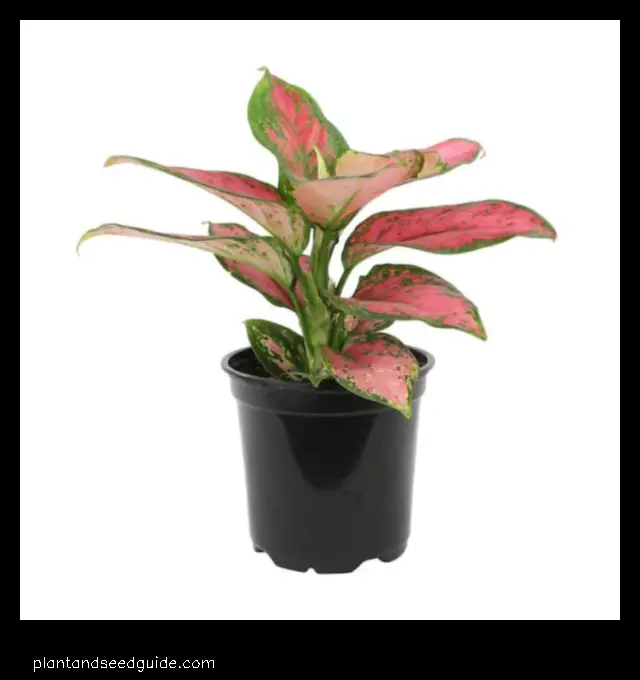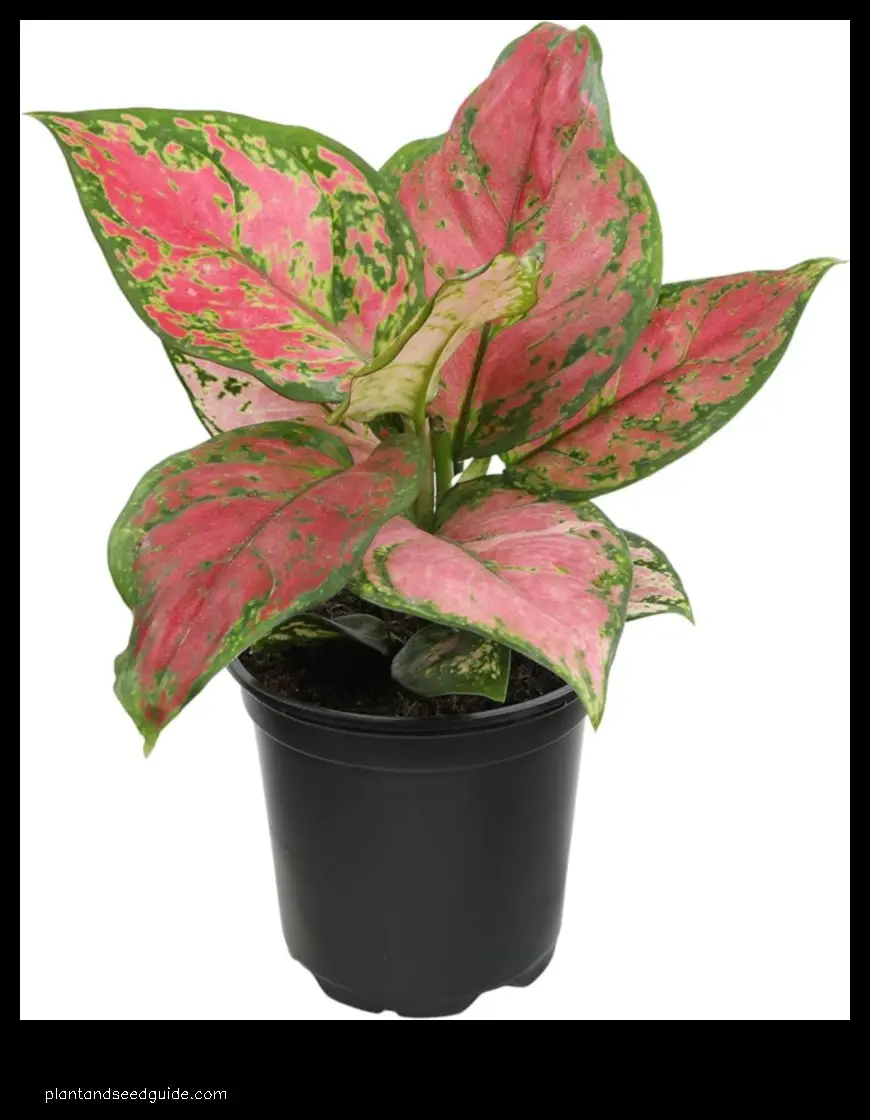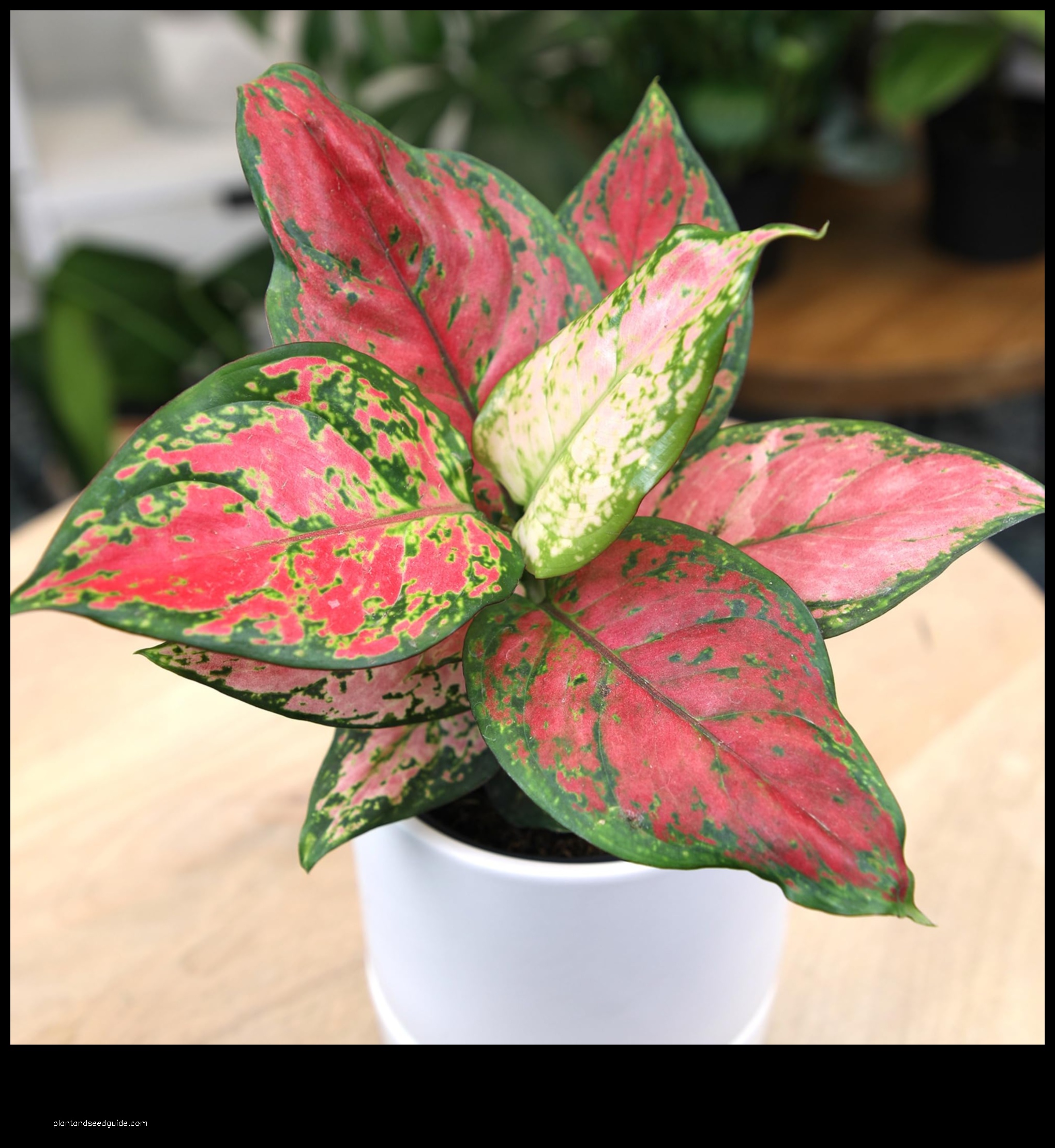

Chinese Evergreen Plant Pink
Chinese Evergreen Plant Pink
Chinese evergreen plants (Aglaonema) are popular houseplants because they are easy to care for and can tolerate a wide range of conditions. They are also known for their beautiful foliage, which comes in a variety of colors, including pink.
Here is a guide on how to care for pink Chinese evergreen plants:
- Light: Pink Chinese evergreen plants need bright, indirect light. Avoid direct sunlight, which can scorch the leaves.
- Water: Water your pink Chinese evergreen plant regularly, but allow the soil to dry out slightly between waterings.
- Temperature: Pink Chinese evergreen plants prefer warm temperatures between 65°F and 85°F.
- Humidity: Pink Chinese evergreen plants do well in humid environments. If the air in your home is dry, mist the leaves regularly or place the plant on a pebble tray filled with water.
- Fertilizer: Feed your pink Chinese evergreen plant with a balanced fertilizer once a month during the growing season.
- Pests and diseases: Pink Chinese evergreen plants are susceptible to pests such as aphids, mealybugs, and spider mites. If you notice any pests on your plant, treat them with a neem oil spray or insecticidal soap.
Pink Chinese evergreen plants are a beautiful and easy-to-care-for addition to any home. With proper care, your plant will thrive and provide you with years of enjoyment.
| Chinese evergreen |
Aglaonema |
| A genus of flowering plants in the family Araceae, native to tropical Asia, Australia and the Pacific Islands. |
A genus of flowering plants in the family Araceae, native to tropical Asia, Australia and the Pacific Islands. |
| Also known as: Chinese evergreen, Chinese evergreen plant, Chinese evergreen tree, Aglaonema commutatum, Aglaonema modestum |
Also known as: Chinese evergreen, Chinese evergreen plant, Chinese evergreen tree, Aglaonema commutatum, Aglaonema modestum |
| Features: Evergreen perennials with thick, glossy leaves arranged in a rosette. |
Evergreen perennials with thick, glossy leaves arranged in a rosette. |
| Uses: Houseplants, landscaping, cut flowers |
Houseplants, landscaping, cut flowers |

Loading... Seconds Left for
Miniature Orchid Terrarium Gallery!

Benefits of Chinese evergreen plants
Chinese evergreen plants are a popular choice for home gardeners because they are easy to care for and can tolerate a wide range of conditions.
They are also known for their air-purifying abilities, which can help to improve the quality of the air in your home..
Here are some of the benefits of Chinese evergreen plants:
- They are easy to care for and can tolerate a wide range of conditions, making them a good choice for beginner gardeners.
- They are known for their air-purifying abilities, which can help to improve the quality of the air in your home.
- They are beautiful plants that can add a touch of greenery to any room.
- They are relatively inexpensive, making them a good option for people on a budget.
3. How to care for Chinese evergreen plants
Chinese evergreen plants are relatively easy to care for, but there are a few things you can do to keep them healthy and thriving.
Here are some tips on how to care for Chinese evergreen plants:
- Water your Chinese evergreen plant regularly, but don’t let it sit in water. The soil should be moist, but not soggy.
- Fertilize your Chinese evergreen plant once a month with a balanced fertilizer.
- Place your Chinese evergreen plant in a bright spot, but avoid direct sunlight.
- Repot your Chinese evergreen plant every two years or so, as it grows.
- Prune your Chinese evergreen plant as needed to remove dead or damaged leaves.
If you follow these tips, your Chinese evergreen plant will be healthy and beautiful for years to come.
Chinese evergreen plants are generally very easy to care for, but there are a few common problems that can occur. These problems include:
- Brown leaves. Brown leaves can be caused by a number of factors, including underwatering, overwatering, too much sun, or too little humidity.
- Yellow leaves. Yellow leaves can be caused by a number of factors, including underwatering, overwatering, too much fertilizer, or pests.
wpil_keyword_link" href="https://plantandseedguide.com/blog/african-violet-root-rot-a-guide-to-prevention-and-treatment/" title="Root" data-wpil-keyword-link="linked">Root rot.
Root rot is a fungal disease that can kill Chinese evergreen plants. It is caused by overwatering and poor drainage.
Mealybugs. Mealybugs are small, white insects that feed on the sap of plants. They can cause leaves to turn yellow and drop off.
Scale insects. Scale insects are small, brown insects that attach themselves to plants and suck sap from the leaves. They can cause leaves to turn yellow and drop off.
If yo
u notice any of these problems, it is important to take steps to correct the problem as soon as possible. This will help to prevent the problem from getting worse and damaging your plant.</p

5. How to propagate Chinese evergreen plants
Chinese evergreen plants are relatively easy to propagate, and you can do so by either stem cuttings or division.
To propagate Chinese evergreen plants by stem cuttings, follow these steps:
- Take a 6- to 8-inch stem cutting from a healthy plant.
- Remove the leaves from the bottom half of the cutting.
- Dip the cutting in rooting hormone.
- Place the cutting in a pot filled with moist potting soil.
- Water the pot well and place it in a warm, sunny location.
- The cutting should root within a few weeks.
To pr
opagate Chinese evergreen plants by division, follow these steps:
- Gently remove the plant from the pot.
- Carefully divide the roots into two or more sections.
- Replant each section in a pot filled with moist potting soil.
- Water the pots well and place them in a warm, sunny location.
- The plants should start to grow new leaves within a few weeks.
n id="6_Where_to_buy_Chinese_evergreen_plants">6. Where to buy Chinese evergreen plants
You can buy Chinese evergreen plants online or at a local garden center. Here are some of the best places to buy Chinese evergreen plants:
Online:
Amazon.com
The Home Depot
Lowe’s
Etsy
Local garden center:
Your local nursery
Home improvement stores
Farmers markets
When choosing a Chinese evergreen plant, be sure to select one that is healthy and free of pests or diseases. Look for plants that have lush, green leaves and no signs of damage. You should also choose a plant that is the right size for your space. If you are not sure what size plant to choose, consult with a garden center employee.
Chinese eve
rgreen plants are relatively easy to care for, but they do require some basic care in order to thrive. Be sure to provide your plant with bright, indirect light, moist soil, and regular watering. You should also fertilize your plant once a month during the growing season.
7. Care tips for pink Chinese evergreen plants
Pink Chinese evergreen plants are a beautiful addition to any home or office. They are relatively easy to care for, but there are a few things you can do to ensure that your plant stays healthy and happy.
Here are some care tips for pink Chinese evergreen plants:
- Water your plant regularly, but do not overwater it. The soil should be moist but not soggy.
- Fertilize your plant monthly with a balanced fertilizer.
- Place your plant in a bright spot, but avoid direct sunlight.
- Repot your plant every two years or so as it grows.
- Prune your plant as needed to maintain a desired shape.
By following these care tips, you can help your pink Chinese evergreen plant thrive for years to come.
Pests_and_diseases_of_pink_Chinese_evergreen_plants">Pests and diseases of pink Chinese evergreen plants
Pink Chinese evergreen plants are susceptible to a variety of pests and diseases, including:
- Aphids
- Mealybugs
- Scale insects
- Spider mites
- Thrips
- Fungus gnats
- Root rot
- Leaf spot
- Rust
If you suspect that your pink Chinese evergreen plant is infested with pests or diseases, it is important to take action immediately to prevent the problem from getting worse. Here are some tips for dealing with pests and diseases on pink Chinese evergreen plants:
- Inspect your plants regularly for signs of pests or diseases.
- Isolate any infected plants from the rest of your collection.
- Use insecticidal soap or neem oil to kill pests.
- Treat fungal diseases with a fungicide.
- Water your plants properly to avoid root rot.
- Provide good air circulation to prevent leaf spot and rust.
By following these tips, you can help keep your pink Chinese evergreen plants healthy and pest-free.




